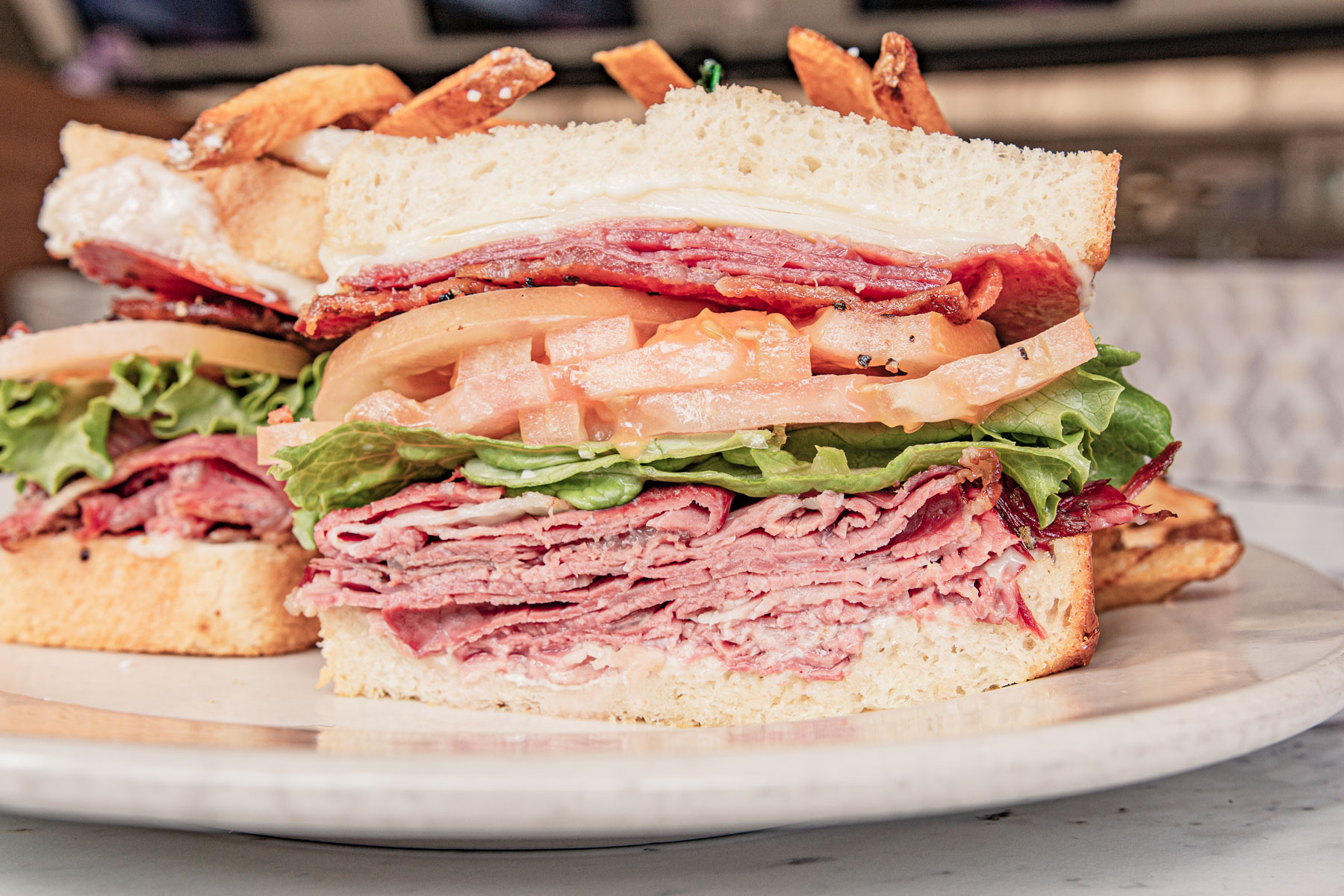
“Desta” means “joy” in Amharic, the official language of East African country Ethiopia. And joy is just what each mouthful provides at Café Desta, Tucson’s second-oldest restaurant representing the cuisine of that specific part of the world.
Telahoun and Brooke Molla opened the restaurant in 2010. Current manager and owner Huruy “Zee” Zerzghi (“Dr. Zee” to his university students and “Zee” to pretty much everyone else) and three of his friends took the reins in March of 2013.
Zee was born and raised in the former Italian colony of Eritrea, which was part of Ethiopia until 1991. Trained in marine biology with a doctorate in environmental science, Zee is not a chef and certainly did not anticipate becoming a restauranteur. (He also works at the University of Arizona.) But his parents were farmers and he came of age working in supervisory positions, so restaurant management and co-ownership are not that far out of his colloquial wheelhouse.
“Running a restaurant was not my plan, but the Mollas were looking for a chef to help them and I was working closely with the Eritrean refugee community,” Zee said. “I was able to find an Eritrean refugee — Minet Abay — to help the Mollas prepare the traditional cuisine.”
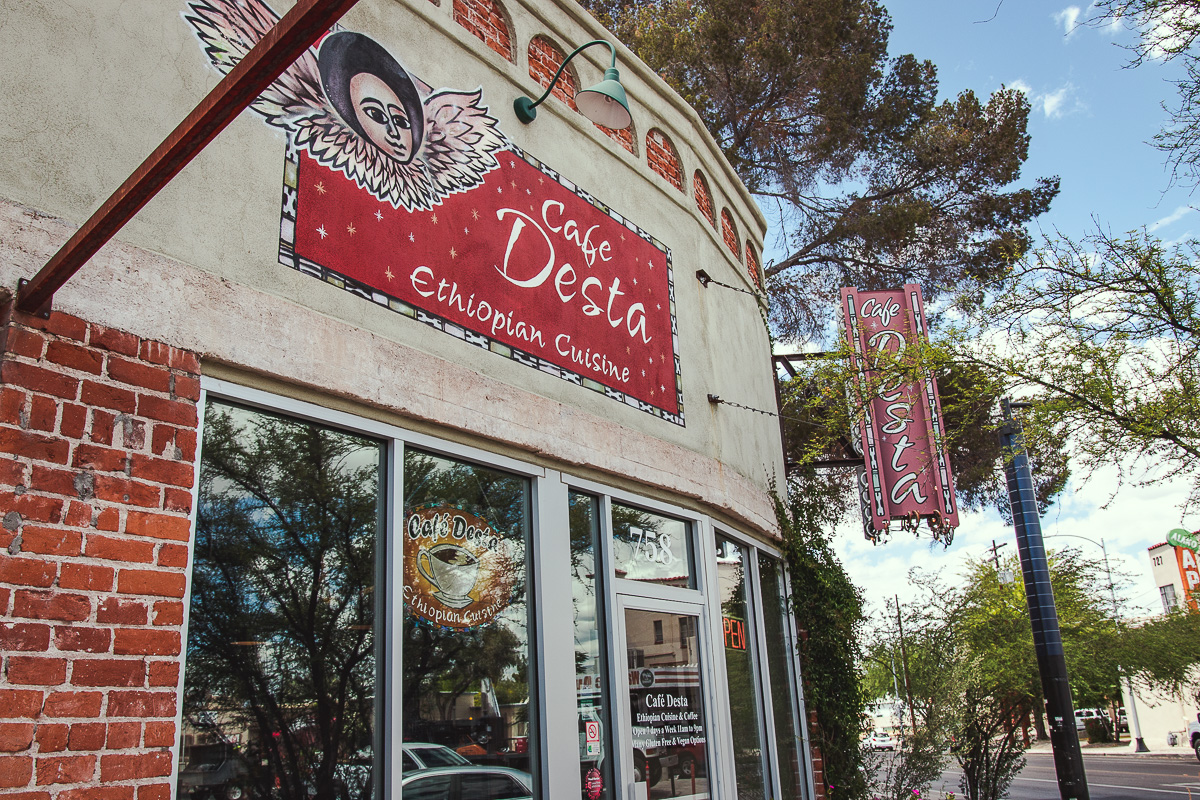
Eventually, the Mollas sought to sell the space, and they wanted to give Abay an opportunity to co-own Café Desta, Zee said. “I was one of four investors who joined [Abay] to keep it going.”
Though chef Abay and manager/co-owner Zee both hail from Eritrea, at Café Desta, customers encounter mostly Ethiopian food, with staple dishes like tikil-gomen (cabbage, potatoes, and carrots, heavy on the turmeric); traditional fish preparations; and lamb and beef tibs (seared in buttery kibé sauce with jalapeños, rosemary, and onions).
They also make their own ayeb, which is kind of like cottage cheese, served to mellow the piquant berbere spice, an Ethiopian trademark.
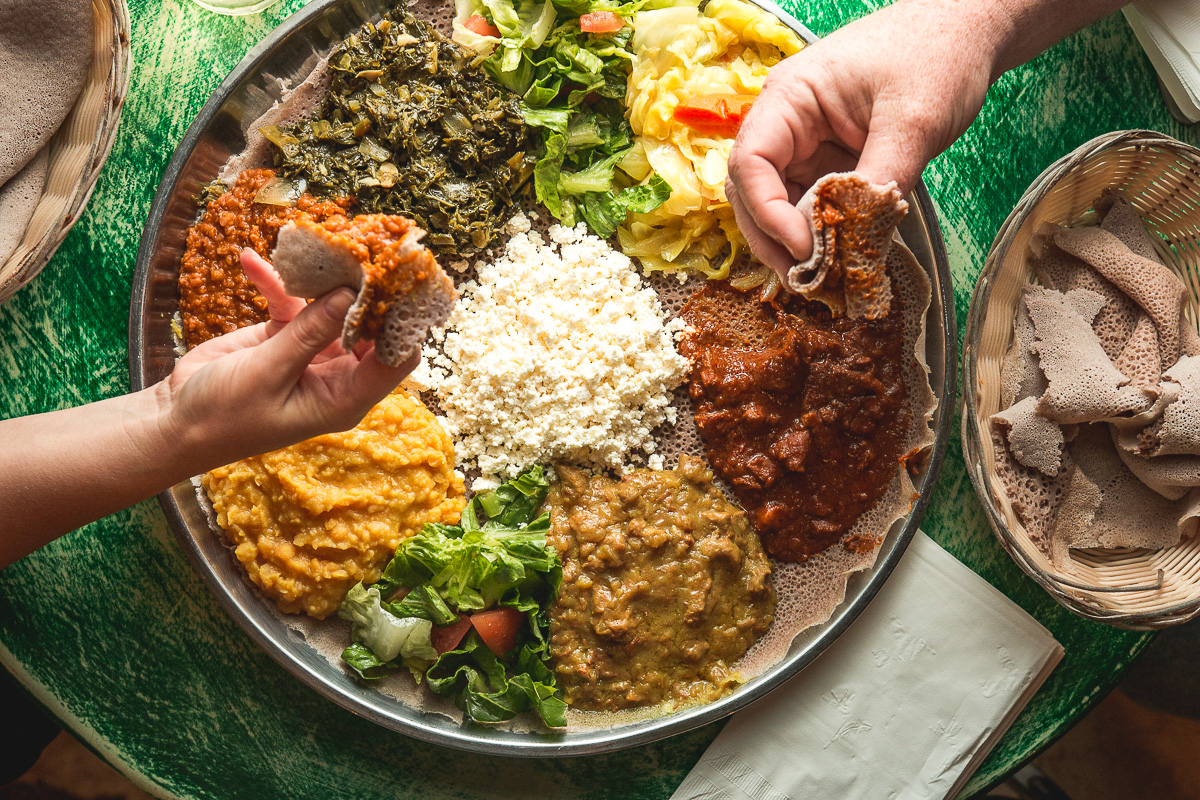
It’s best to go with friends and get a combo plate, such as Combo for Two, so that you can try all the flavors. Let the server know your preferences and they’ll suggest an assortment.
The stews can look similar to one another at first, but at Café Desta, none of the flavors are muddled. Each item has a distinct taste and complex flavor profile. The vegan options with lentils, or “azifa,” are delicious and diverse. Try options such as Misir, spicy red lentils, or Kik, yellow split peas cooked with onion, ginger and tumeric.
Carnivores ought to try the lamb, even if it’s not a usual go-to selection. Desta’s preparation is known to change hearts and minds toward the ovine. Give the Kaya Beg, cooked in a mixture of spices with hot chilies and onions, a try. And don’t skip Ethiopian coffee!
One reason the dishes are so crisp yet complex is that Zee imports all spices from Ethiopia, to provide what he calls “a better taste of the authentic cuisine.”
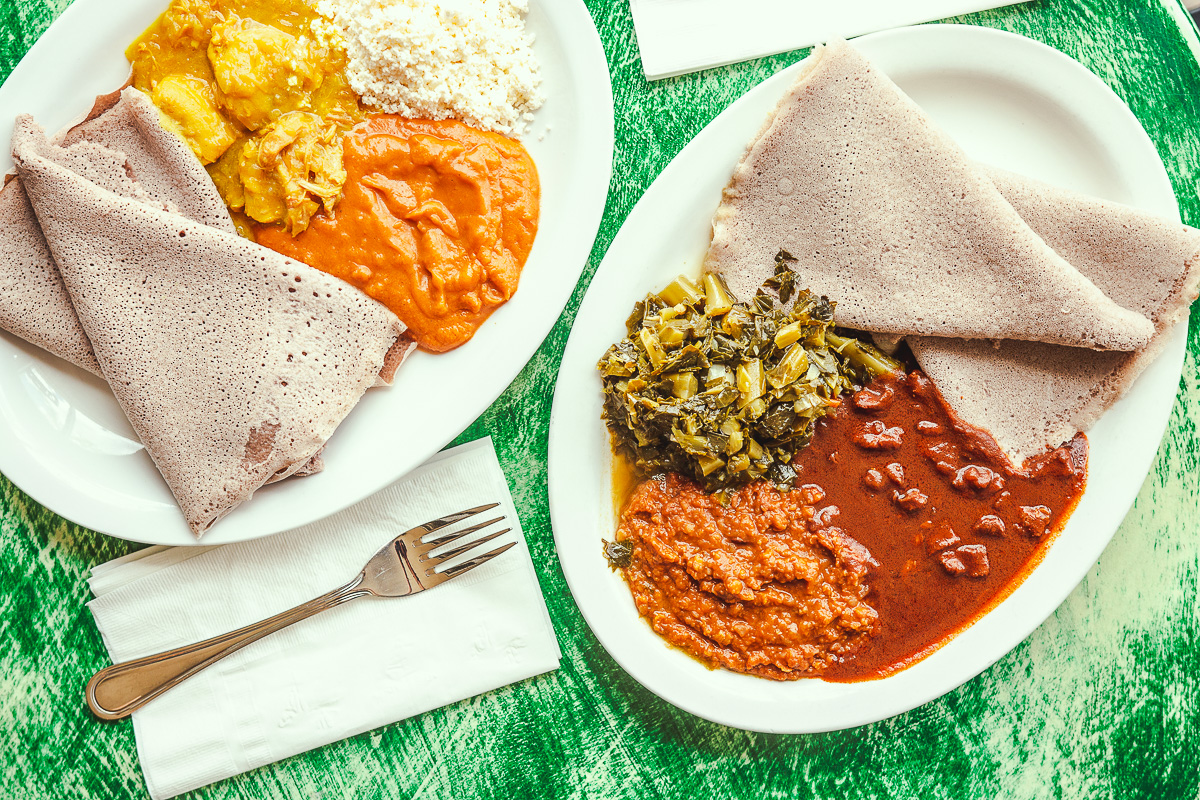
The injera (the ubiquitous Ethiopian crepe-thin, absorbent starch that serves as both a utensil and a plate liner) is made with the teff grain, as is traditional. Zee noted that the grain is expensive in the States, but said that Café Desta uses it because it’s gluten-free, tastier, and healthier than less pricey wheat or buckwheat versions.
Newbies to the cuisine are often taken aback by eating communally with their (right!) hands and only the thin injera barrier protecting their fingers from the food, but that’s a main part of the experience. (The restaurant does provide forks for shy guests upon request.)
Zee is a specialist in environmental microbiology and food safety is one of his main concerns.
“I spend so much time assuring the cleanliness and safety of our dishes, which is one of our goals at the restaurant — food safety,” he said.
The restaurant interior is crisp and minimalistic, with sizeable pieces of framed African art throughout. (The women’s bathroom is a mite disconcerting in that it features a floor-to-ceiling mirror right in front of the toilet, and it’s arguably too clean and unavoidably reflective!)
Tucsonans often ask Zee how the city can sustain a growing number of restaurants representing the cuisines of Ethiopia and neighboring Eritrea, but it’s important to remember that we’re home to a substantial community of African refugees. An estimated 500 or so native Ethiopians live here, and Zee noted that Café Desta is “a helpful hub” for the Horn of Africa refugee communities.
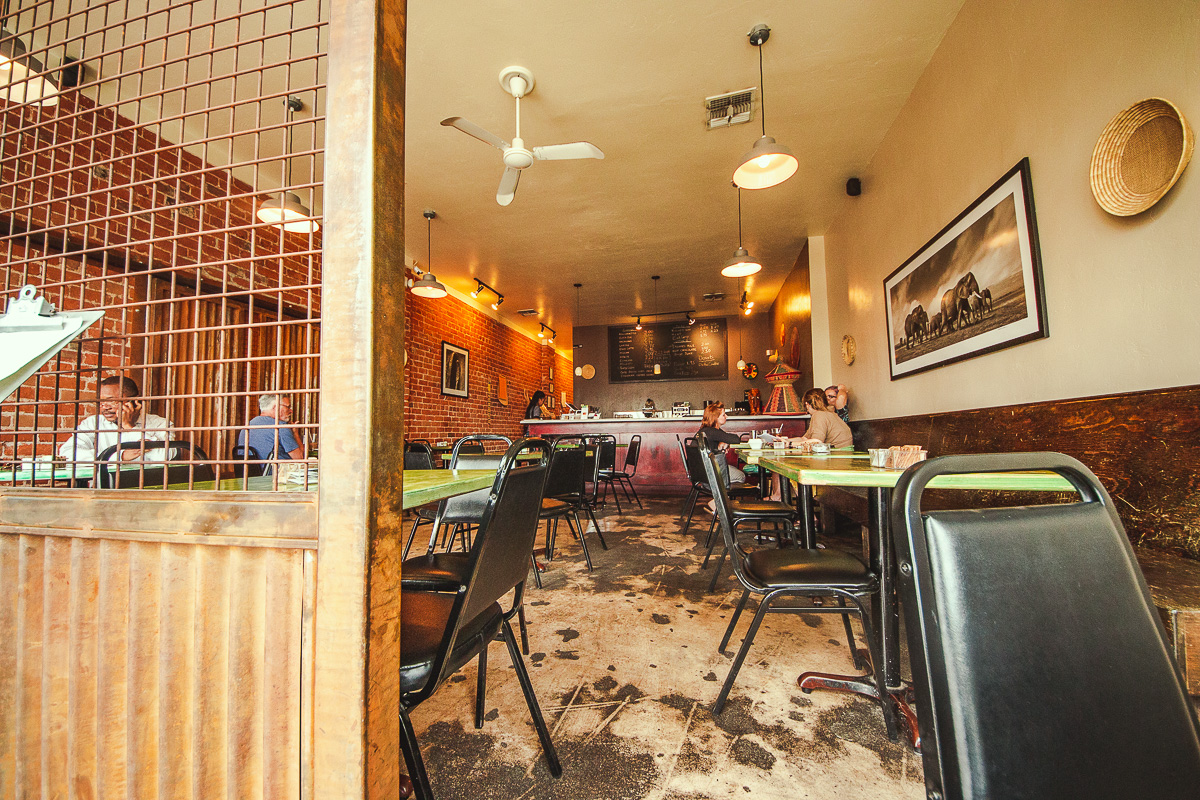
“[Café Desta provides] a good transition for newcomers, Tucson residents, and those who enjoy [our] local flavor,” he said. “Immigrants and other newcomers have a lot of challenges but the United States is truly [the] land of opportunity. The American people are so special in many ways.”
Cafe Desta, located at 758 S. Stone Ave., is open from 11 a.m. – 9 p.m. daily.
For more information, visit Cafe Desta on Facebook.
Read our July 2019 article Explore Tucson’s culinary depth with ethnic dishes from 28 different countries.